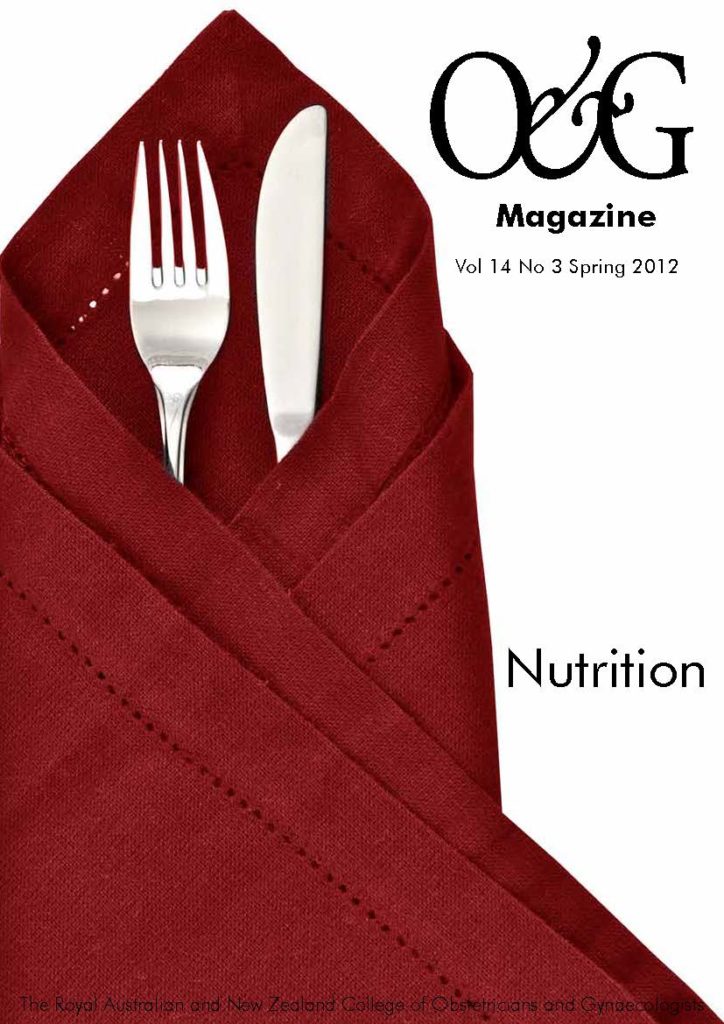A vegetarian for 20 years, my decision to stop eating meat had more to do with a love of animals than the associated health benefits. Now, I also view vegetarianism as having numerous health and environmental benefits.
The term ‘vegetarian’ is applied to a number of different diets, all based on a consumption of fruit, vegetables, legumes, whole grains and nuts; and an elimination of meat and/or all animal products.Vegetarian diets differ in their popularity and composition around the world. An estimated five per cent of Australians identify as vegetarian, but only two per cent abstain from eating any meat, fish or poultry.1 This compares to 2.5 per cent in the USA, three per cent in the UK and four per cent in Canada.2
A lacto-ovo vegetarian diet is one that excludes meat (including poultry and seafood), but includes dairy products and eggs, and is the most common type of vegetarian diet. A vegan diet eliminates all animal products, including dairy. Those who follow a vegan lifestyle also avoid animal products, such as leather, altogether. Some ‘vegetarians’ (pescatarians/vegaquarians) eat a small amount of seafood and, increasingly, non-vegetarians are reducing their red meat consumption, as a ‘vegetarian-influenced’ lifestyle is sought for health, economic or environmental reasons.
Reasons to be vegetarian
There are a number of reasons why people choose to be vegetarian. For many, the concerns for animal welfare are of the utmost importance; with 2011’s media exposure of the realities of live export a reminder of the life and death that many farmed animals have to endure. Worldwide each year, 56 billion land animals are reared and slaughtered for human consumption3, with many of these animals having lived, been transported or killed in inhumane or substandard conditions.
Factory or ‘intensive’ farming is becoming more common in countries such as the USA and China, as the demand for meat increases at an alarming rate. Animals, commonly pigs and poultry, are held in small cages, crates or stalls, in an artificial warehouse-like environment, devoid of natural stimuli and adequate space.3 Australia, unfortunately, is not immune to this practice, with 75 per cent of eggs sold coming from battery (cage) hens and an even greater number of ‘broiler’ hens (grown rapidly for 30–60 days prior to slaughter) reared in cramped conditions. Annually in Australia, 470 million broiler hens are produced, with the average person consuming 38kg of chicken per year.4
In these ‘factory farms,’ debeaking is not an uncommon practice. It is used to prevent ‘cannibalism’, a behaviour that occurs when too many birds are in a confined space and they end up pecking and attacking one another due to their stressful environment. In Australia, 5.5 million pigs are killed for meat each year, with 95 per cent raised indoors in intensive ‘farming’ conditions. One recent, though small, advance has been the move by the pork industry to phase out ‘sow stalls’ (by 2017), in which pregnant and lactating pigs are housed in concrete pens, with little room to move.5
There are over 16 million beef cattle in Australia, the majority of which graze in pastures, but intensive feedlots have increased in numbers, with cattle being fattened by grain in confined lots prior to (often stressful) transport and slaughter. Up to 50 per cent of the beef in supermarkets comes from feedlots.5
Environmental impact
Many people are turning to a vegetarian diet to reduce their carbon footprint. A lacto-ovo vegetarian diet requires significantly less energy, land and water resources than a meat-based diet.6 Production of 1kg of animal protein requires 100-times more water than 1kg of grain protein. In the USA, the nine billion animals of the livestock trade consume more than seven-times the amount of grain consumed directly by the human population each year.6 The impact of the livestock industry on the environment is enormous. The Food and Agricultural Organization of the United Nations reports the livestock sector as one of the most significant contributors to serious environmental problems, such as land degradation, climate change, air pollution, water shortage, water pollution and loss of biodiversity.7 Over 18 per cent of greenhouse gas (GHG) emissions (measured in carbon dioxide equivalent) are attributed to the livestock trade, a similar share to industry and a higher share than transport.7, 8 The livestock industry is the leading offender in the production of other GHGs, responsible for 37 per cent of the methane emissions (mostly from enteric fermentation in ruminants, such as cattle and sheep) and 65 per cent of the nitrous oxide emissions caused by humans.
Livestock production, for grazing or feedcrop, accounts for 30 per cent of the planet’s land surface. Around the world, deforestation has been devastating, with up to 70 per cent of land previously covered by rainforest in the Amazon cleared for pastures or for the plantation of livestock feed.7 In Australia, the dairy industry is the highest user of irrigated water in the Murray-Darling Basin and livestock consumes over eight per cent of total global water use.9
With the shift toward a Western diet in developing countries, along with general population growth, the global production of meat is expected to more than double from 229 million tonnes in 1999/2001 to 465 millions tonnes in 2050.7 Experts are calling for a substantial reduction in meat consumption in developed countries, and constrained growth in developing countries.8 Worldwide, the ‘Meatless Monday’ movement, which began in 2003, has gained popularity in an effort to decrease the demand and flow on effects from a meat-based diet.
Health benefits
Vegetarian diets include lower amounts of saturated fats, cholesterol and animal protein; and increased amounts fruits, vegetables, whole grains, nuts, soy, fibre and phytochemicals, with increased levels of magnesium, folate, vitamin C, vitamin E and antioxidants, thought to be beneficial in reducing the risk of chronic disease. Vegetarians tend to have lower body mass indices and are less likely to be overweight or obese; they have lower low-density lipoprotein cholesterol levels, lower blood pressure, and less risk of diabetes and the metabolic syndrome.9-11 Death from ischaemic heart disease (IHD) is also reduced in vegetarians compared with non-vegetarians.10 In some studies, a vegetarian diet has been associated with lower overall cancer rates and high red meat intake has been linked with an increased risk of colorectal cancer.10 Vegetarians have also been shown to have a longer life expectancy.
Women’s health and nutrition
The American Dietetic Association and the Dietitians of Canada endorse appropriately planned vegetarian (and vegan) diets as healthy and nutritionally adequate.2 It is their position that a well-planned plant-based diet is suitable in all stages of life, including pregnancy, lactation, infancy, childhood and adolescence.11
Most people in the developed world consume more protein than is necessary.12 The recommended dietary intake (RDI) of protein per day is 46g for women aged 19–70 years, 58–60g in pregnancy, and 63–67g during lactation.13 In a study of Australian women aged 18–45 years, vegetarians (including vegans) had a mean protein intake of 54g per day, lower than the 67g per day for omnivores, but still meeting the RDI.14 A variety of protein sources (soy and mixed vegetable) best ensures protein and individual amino acid requirements are met. Nuts, seeds, soy and legumes are important sources of protein in a vegetarian diet. Consuming protein from plant sources, rather than animal sources (which are also higher in saturated fat and cholesterol), may be one of the reasons why vegetarians have a lower risk of obesity and IHD.12
Vegetarian diets contain as much iron as diets containing meat.15 The iron from a plant-based diet is non-haem, while both non-haem and haem iron are obtained from a mixed diet. The bioavailability of non-haem iron is largely determined by the body’s need for iron – when iron stores are low, absorption increases and excretion decreases. Vegetarian diets are also higher in vitamin C, which aids in the absorption of non-haem iron.14 In a European study of 43 000 women, vegetarians and non-vegetarians had similar iron intakes and haemoglobin concentrations16, and a number of other studies have demonstrated that vegetarian women are no more likely to have iron deficiency anaemia than non-vegetarians.14 Obesity, a by-product of the Western, affluent meat-based diet, is more strongly associated with iron deficiency anaemia than a vegetarian diet is.
The current RDI for iron for women aged between 19 and 50 years is 18mg/day.13 The RDI in pregnancy is 27mg/day. Pregnancy sees an increase in intestinal iron absorption by up to 60 per cent in the third trimester as nutritional demands increase. In a prospective cohort of 1274 pregnant women, vegetarians were less likely to have low dietary iron intake, and more likely to take iron supplements during pregnancy, with a positive effect on fetal weight.17
Well-planned, plant-based vegetarian diets have also been shown to meet current recommendations for most omega-3 fatty acids, zinc, iodine, calcium, vitamin D and vitamin B12.11 Vitamin B12 deficiency may occur in vegan diets, as animal-based products are almost exclusively the source of this vitamin. It is recommended that vegans (and vegetarians who do not eat an adequate amount of eggs or dairy) have their vitamin B12 levels checked regularly, and take supplements, or fortified foods to reduce the risk of deficiency, which can lead to neurological symptoms and disease. Vitamin B12 in this way is highly bioavailable and deficiency can be easily prevented. Infants born to vegan mothers are also at risk of significant vitamin B12 deficiency, if the mother has not had adequate supplementation in pregnancy and lactation.18
It is important to consider where your food comes from, to make ethical and responsible decisions regarding your next meal and, if possible, reduce the amount of meat in your diet. International Vegetarian Week (1–7 October) is a good place to start. As Albert Einstein said, ‘Nothing will benefit human health and increase chances of survival for life on earth as much as the evolution to a vegetarian diet.’
References
- Vegetarian/Vegan Society of Queensland. A pound of flesh (surveyreport) 2010. [cited 2012 July 10] : Available from: http://www.vegsoc.org.au .
- American Dietetic Association; Dietitians of Canada. Position of American Dietetic Association and Dietitians of Canada: Vegetarian diets. J Am Diet Assoc 2003; 103(6):748-65.
- Koneswaran G, Nierenberg D. Global Farm Animal Production and Global Warming: Impacting and Mitigating Climate Change. Environ Health Perspect 2008; 116(5):578-82.
- ‘Chicken Meat: Industry Overview’, Department of Agriculture,Fisheries and Forestry. [cited 2012 July 12]: Available from: www.daff.gov.au/agriculture-food/meat-wool-dairy/ilg/industries/chicken_meat.
- Crocombe A. Ethical Eating. London: Penguin; 2008.
- Pimentel D, Mimentel M. Sustainability of meat-based and plant-based diets and the environment. Am J Clin Nutr 2003;78(Suppl):S660-3.
- Steinfiel H, Gerber P, Wassenaar T, et al. Livestock’s long shadow:environmental issues and options. Rome 2006: Food and Agricultural Organization of the United Nations; ISBN: 978-92-5-105571-7.
- McMichael AJ, Powles JW, Butler CD, Uauy R. Food, livestock production, energy, climate change, and health. Lancet 2007;370:1253-63.
- Joyce AW, Dixon S, Comfort J, Hallett J. The Cow in the Room: PublicKnowledge of the Links Between Dietary Choices and Health andEnvironmental Impacts. Environ Health Insights 2008; 1:31-4.
- Fraser G. Vegetarian diets: what do we know of their effectson common chronic diseases? Am J Clin Nutr 2009:89(Suppl):S1607-12.
- Craig WJ, Mangels AR. American Dietetic Association. Position ofthe American Dietetic Association: vegetarian diets. J Am Diet Assoc 2009; 109(7):1266-82.
- Marsh KA, Munn EA, Baines SK. Protein and vegetarian diets. MJA Open 2012; (1 Suppl 2):S7-10.
- Australian Government Department of Health and Ageing, National Health and Medical Research Council; New Zealand Ministry ofHealth. Nutrient reference values for Australia and New Zealand including recommended dietary intakes. Canberra; NHMRC, 2005.[cited 2012 July 12]: Available from http://www.nhmrc.gov.au/guidelines/publications/n35-n36-n37.
- Ball MJ, Bartlett MA. Dietary intake and iron status of Australian vegetarian women. Am J Clin Nutr 1999; 70:353-8.
- Saunders AV, Craig WJ, Baines SK, Posen JS. Iron and vegetarian diets. MJA Open 2012; (1 Suppl 2):S11-16.
- Davey GK, Spencer EA, Appleby PN, et al. EPIC Oxford lifestyle characteristics and nutrient intakes in a cohort of 33,883 meat eaters and 31,546 non meat-eaters in the UK. Public Health Nutr 2003; 6:259-69.
- Alwan NA, Greenwood DC, Simpson NAB et al. Dietary iron intake during early pregnancy and birth outcomes in a cohort of British women. Hum Reprod 2011; 26(4):911-9.
- Zeuschner CL, Hokin BD, Marsh KA et al. Vitamin B12 and vegetarian diets. MJA Open 2012; (1 Suppl 2):S27-32.






Leave a Reply